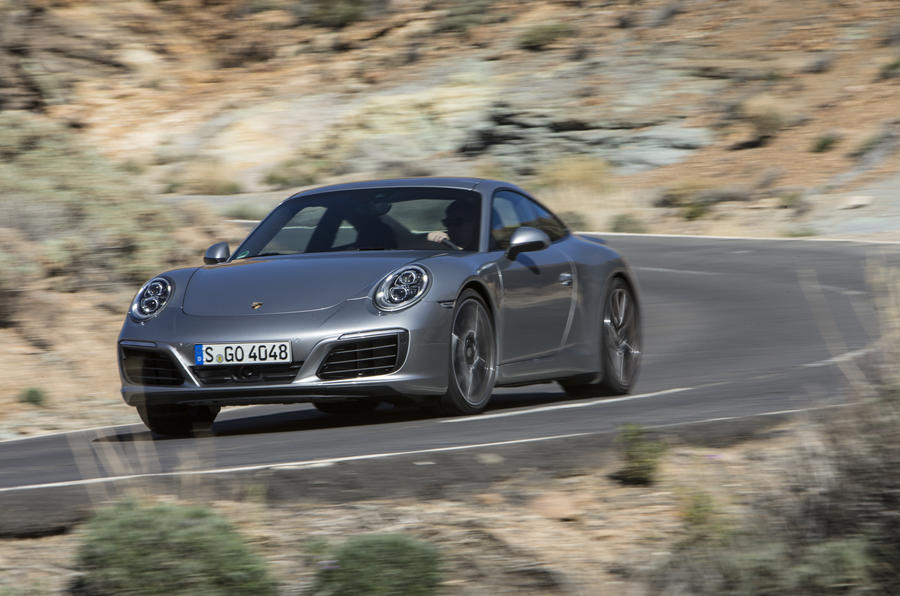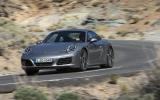What is it?
It's the cheapest way into Porsche's revamped Porsche 911 - if its now-higher £76,412 entry price can ever be determined 'cheap'. It's also the slowest 911, that is, if the now more powerful 369bhp Carrera's 0-62mph time of 4.6secs should be labelled as such.
Like the faster 414bhp S, which gets modified turbocharger compressors, a unique exhaust system and different engine management tuning in order to achieve its greater outputs, the standard Carrera sports a bi-turbo 2981cc flat-six petrol engine in order to meet stricter emissions regulations. Cue the wincing and sharp intakes of breath.
Carrera models don't, unlike the S, get the option of rear-wheel steer, but Porsche has given its seven-speed manual gearbox a new clutch, designed to be easier on the left leg during spirited driving and over long journeys. It also has longer gearing from third onwards owing to the engine's extra torque, while opting for the least amount of power brings the advantage of range-best official fuel economy figures of 34.0mpg, although the PDK ’box brings with it lower CO2 emissions.
So what else do you get for your £76k? Well, new daytime running lights and redesigned tail-lights, a different bonnet design, clever front air intakes that automatically open and close and standard PASM adjustable dampers with a 10mm lowered ride height. Inside sits Porsche's brand new PCM infotainment system, too.




























































































Join the debate
Add your comment
911
Predictable result.
As you point out Ferrari got it right and Porsche probably too. In a hot hatch or even something like an M3 a certain compromise in lag and sound can be swallowed but Ferrari and Porsche knew thay had to bring the turbocharged engine as close as possible to a naturally aspirated in character and employed all their resources and huge know how to achieve it and it shows.
Seems to be about rotational
Indeed.
All about inertia, and as a rule a smaller wheel, to a point of course, say 17 to 19 on a Golf will perform better. The only scientific constraint I can think of ( handling is subjective and tunable) is the weight of the car as clearly the wheel as a whole has to carry and stand it. Which of course bring us to the fundamental rule of vehicle design: the loawe the weight of the car in the first place the better the end result and flexibility you'll have when it comes to the wheels, or suspensuins for that matter
Ofir wrote: winniethewoo
OK without 21" rims, without
A pointless point??